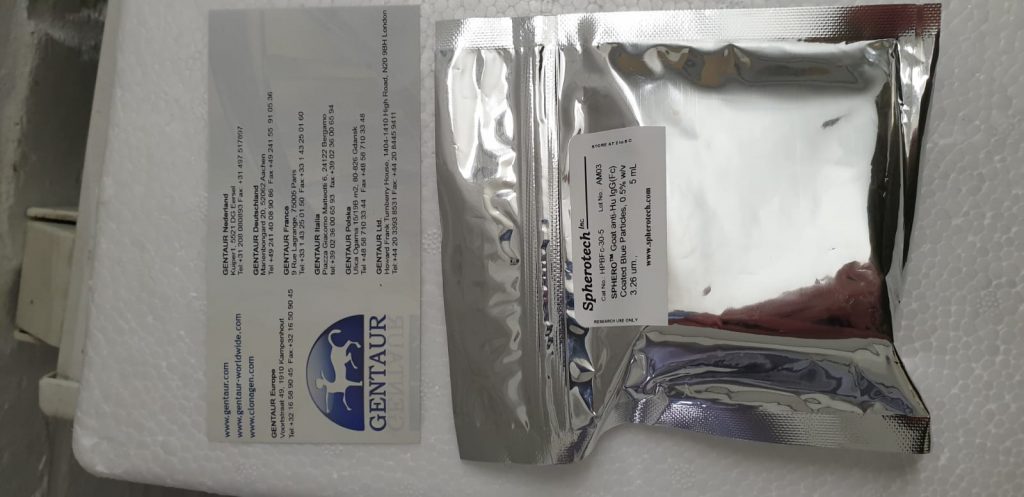Lassa mammarenavirus (LASMV) is answerable for a particular sort of acute viral hemorrhagic fever generally known as Lassa fever. Lack of efficient therapies and counter-measures towards the virus has resulted in a excessive mortality fee in its endemic areas. Subsequently, on this research, a novel epitope-based vaccine has been designed utilizing the strategies of immunoinformatics focusing on the glycoprotein and nucleoprotein of the virus.
After quite a few sturdy analyses, two CTL epitopes, eight HTL epitopes and 7 B-cell epitopes have been lastly chosen for establishing the vaccine. All these most promising epitopes have been discovered to be antigenic, non-allergenic, unhazardous and non-human homolog, which made them appropriate for designing the subunit vaccine. Moreover, the chosen T-cell epitopes which have been discovered to be totally conserved throughout totally different isolates of the virus, have been additionally thought-about for last vaccine building.
After that, quite a few validation experiments, i.e. molecular docking, molecular dynamics simulation and immune simulation have been carried out, which predicted that our designed vaccine must be secure inside the organic setting and efficient in combating the LASMV an infection. Ultimately, codon adaptation and in silico cloning research have been carried out to design a recombinant plasmid for producing the vaccine industrially. Nonetheless, additional in vitro and in vivo assessments must be achieved on the constructed vaccine to lastly verify its security and efficacy.Communicated by Ramaswamy H. Sarma.
A rational design of a multi-epitope vaccine towards SARS-CoV-2 which accounts for the glycan protect of the spike glycoprotein
The continued international well being disaster brought on by Extreme Acute Respiratory Syndrome Coronavirus 2 (SARS-CoV-2), the virus which results in Coronavirus Illness 2019 (COVID-19) has impacted not solely the well being of individuals in all places, however the financial system in nations the world over. Whereas vaccine candidates and therapeutics are at the moment present process medical trials, there’s a lack of confirmed efficient therapies or cures for COVID-19.
On this research, we’ve introduced a synergistic computational platform, together with molecular dynamics simulations and immunoinformatics methods, to rationally design a multi-epitope vaccine candidate for COVID-19. This platform combines epitopes throughout Linear B Lymphocytes (LBL), Cytotoxic T Lymphocytes (CTL) and Helper T Lymphocytes (HTL) derived from each mutant and wild-type spike glycoproteins from SARS-CoV-2 with numerous protein conformations.
As well as, this vaccine assemble additionally takes the appreciable glycan protect of the spike glycoprotein under consideration, which protects it from immune response. We’ve recognized a vaccine candidate (a 35.9 kDa protein), named COVCCF, which consists of 5 LBL, 6 HTL, and 6 CTL epitopes from the spike glycoprotein of SARS-CoV-2.

Utilizing multi-dose immune simulations, COVCCF induces elevated ranges of immunoglobulin exercise (IgM, IgG1, IgG2), and induces robust responses from B lymphocytes, CD4 T-helper lymphocytes, and CD8 T-cytotoxic lymphocytes. COVCCF induces cytokines essential to innate immunity, together with IFN-γ, IL4, and IL10. Moreover, COVCCF has ideally suited pharmacokinetic properties and low immune-related toxicities. In abstract, this research gives a strong, computational vaccine design platform for fast improvement of vaccine candidates (together with COVCCF) for efficient prevention of COVID-19.Communicated by Ramaswamy H. Sarma.
A Proteome-Broad Immunoinformatics Software to Speed up T-Cell Epitope Discovery and Vaccine Design within the Context of Rising Infectious Illnesses: An Ethnicity-Oriented Method
Rising infectious ailments (EIDs) brought on by viruses are growing in frequency, inflicting a excessive illness burden and mortality world-wide. The COVID-19 pandemic brought on by the novel SARS-like coronavirus (SARS-CoV-2) underscores the necessity to innovate and speed up the event of efficient vaccination methods towards EIDs. Human leukocyte antigen (HLA) molecules play a central position within the immune system by figuring out the peptide repertoire exhibited to the T-cell compartment.
Genetic polymorphisms of the HLA system thus confer a robust variability in vaccine-induced immune responses and should complicate the number of vaccine candidates, as a result of the distribution and frequencies of HLA alleles are extremely variable amongst totally different ethnic teams. Herein, we construct on the rising paradigm of rational epitope-based vaccine design, by describing an immunoinformatics software (Predivac-3.0) for proteome-wide T-cell epitope discovery that accounts for ethnic-level variations in immune responsiveness. Predivac-3.
Zero implements each CD8+ and CD4+ T-cell epitope predictions based mostly on HLA allele frequencies retrieved from the Allele Frequency Web Database. The software was totally assessed, proving comparable performances (AUC ~0.9) towards 4 state-of-the-art pan-specific immunoinformatics strategies able to population-level evaluation (NetMHCPan-4.0, Pickpocket, PSSMHCPan and SMM), in addition to a robust accuracy on proteome-wide T-cell epitope predictions for HIV-specific immune responses within the Japanese inhabitants.
The utility of the tactic was investigated for the COVID-19 pandemic, by performing in silico T-cell epitope mapping of the SARS-CoV-2 spike glycoprotein in line with the ethnic context of the international locations the place the ChAdOx1 vaccine is at the moment initiating part III medical trials. Doubtlessly immunodominant CD8+ and CD4+ T-cell epitopes and inhabitants coverages have been predicted for every inhabitants (the Epitope Discovery mode), together with optimized units of broadly acknowledged (promiscuous) T-cell epitopes maximizing protection within the goal populations (the Epitope Optimization mode).
[Linking template=”default” type=”products” search=”Guinea pig Chondroitin epitopes 5d4 ELISA kit” header=”3″ limit=”116″ start=”3″ showCatalogNumber=”true” showSize=”true” showSupplier=”true” showPrice=”true” showDescription=”true” showAdditionalInformation=”true” showImage=”true” showSchemaMarkup=”true” imageWidth=”” imageHeight=””]
Inhabitants-specific epitope-rich areas (T-cell epitope clusters) have been additional predicted in protein antigens based mostly on mixed standards of epitope density and inhabitants protection. General, we conclude that Predivac-3.Zero holds potential to contribute within the understanding of ethnic-level variations of vaccine-induced immune responsiveness and to information the event of epitope-based next-generation vaccines towards rising pathogens, whose geographic distributions and populations in want of vaccinations are sometimes well-defined for regional epidemics.

